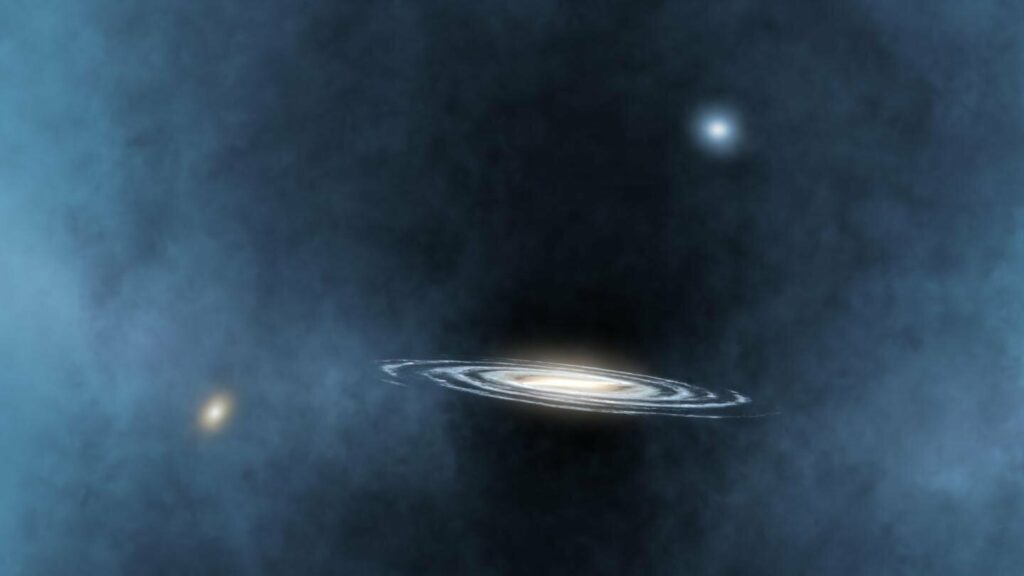Research Reveals Surprising Impact of Black Holes Outside Their Host Galaxies
The center of most massive galaxies contains a black hole with a strong gravitational field that only affects a small area around it. Despite being much smaller than their host galaxies, these black holes play a crucial role in understanding the universe. Without them, we cannot explain the observed properties of galaxies. Theoretical predictions suggest that as these black holes grow, they release enough energy to heat up and expel gas from galaxies to far distances. Understanding how this energy interacts with galaxies and influences their evolution is a fundamental question in Astrophysics today.
To investigate this further, a team led by Ignacio Martín Navarro from the Instituto de Astrofísica de Canarias (IAC) has explored whether the matter and energy emitted from these black holes can also impact the evolution of satellite galaxies located at even greater distances. The researchers utilized the Sloan Digital Sky Survey to analyze the characteristics of thousands of groups and clusters of galaxies. The findings of this study, which was initiated during Navarro’s time at the Max Planck Institute for Astrophysics, have been published in Nature magazine.

Annalisa Pillepich, a researcher at the Max Planck Institute for Astronomy (MPIA, Germany) and co-author of the article, explains that the satellite galaxies formed different numbers of stars depending on their orientation with respect to the central galaxy. To investigate this geometrical effect, the researchers utilized a cosmological simulation called Illustris-TNG, which incorporates a specific method for handling the interaction between central black holes and their host galaxies. Pillepich adds that the Illustris-TNG simulation mirrored the observations, demonstrating a clear modulation of the star formation rate in satellite galaxies based on their position relative to the central galaxy.
This finding is significant as it provides observational evidence supporting the notion that central black holes play a crucial role in regulating galaxy evolution, a fundamental aspect of our current understanding of the Universe. However, this hypothesis is continuously scrutinized due to the challenges associated with measuring the actual impact of black holes on real galaxies, rather than solely considering theoretical implications.
Therefore, these results suggest a specific connection between black holes and their galaxies, enabling them to expel matter to significant distances from the centers of galaxies and even influence the evolution of nearby galaxies. The first author of the article, Navarro, explains that not only can we observe the effects of central black holes on galaxy evolution, but this analysis also paves the way for a deeper understanding of the interaction details.
Navarro concludes by highlighting the collaborative effort between the observer and theorist communities, emphasizing the usefulness of cosmological simulations as a tool to comprehend the behavior of the Universe in the field of extragalactic Astrophysics.
This article is republished from PhysORG under a Creative Commons license. Read the original article.
Do not forget to share your opinion with us to provide you with the best posts !




0 Comments